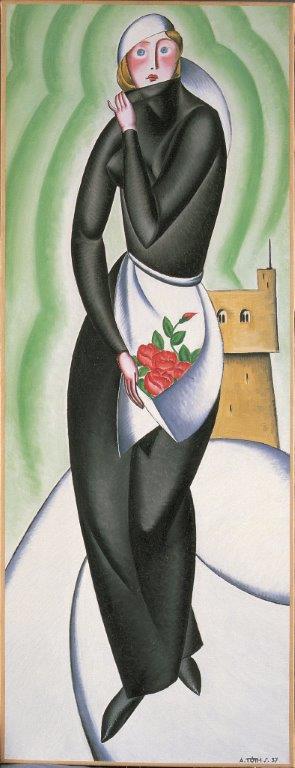We share something inalienable with the stars, yet they remain distant
We humans have an unquenchable thirst for knowing; to get familiar with the unknown. We try to reach the stars only to discover that they are unreachable. Though we are part of the universe it is not our domain. Planet Earth is our sphere, where we toil and quest for becoming the best versions of ourselves, the true homo sapiens (‘wise man’ in Latin). When we manage, even if only for short periods of time, we are just as radiant as stars. Then we are more familiar with the unknown than we ever thought to be. We are wise.
Artist Tineke Smith communicates her quest by various ways of artistic expression that cross-pollinate each other: visual art, danse, music, installations or performance are often interwoven with poetry. She formulates questions and challenges the viewer to start a dialogue with the images.
Her point of departure is close; simple natural things that surround us all. Like the flowers painted in a way that could just as well be images of stars (Fragility series). The micro and the macro environment are linked by the spectator. Such a work has a timeless communication flow, it refers to a kind of primeval human cosmic experience. The fading ‘aged’ colours catch something of the transient yet precious nature of the human life form that consists of humus, the earth, stardust, the minerals and a mysterious breath of the ‘all-supporting’, the immanent.


 One of my favourites is her installation Noli Tangere. The enclosed raw wool sculpture pierced with copper wire is an expression of vulnerability, the longing for true touch and the indestructible power of real heart to heart contact. That is where wisdom lies somewhere. In the connection to each other we also connect to the familiar yet hidden source of life. The installation also encapsulates the frustration of wanting to join the ‘familiar un-known’, yet unable to do so. The poetic reference to the story of the resurrection in the title adds fundamental layers.
One of my favourites is her installation Noli Tangere. The enclosed raw wool sculpture pierced with copper wire is an expression of vulnerability, the longing for true touch and the indestructible power of real heart to heart contact. That is where wisdom lies somewhere. In the connection to each other we also connect to the familiar yet hidden source of life. The installation also encapsulates the frustration of wanting to join the ‘familiar un-known’, yet unable to do so. The poetic reference to the story of the resurrection in the title adds fundamental layers.
 The installation Danse macabre or Aliens is built from recycled and adapted (with loam and purse foam) vine. It symbolizes life and vigour, but also how people abuse nature. Besides, the sculptures waggle as unhandy extra-terrestrial figures landed on earth. An estranging, yet affectionate experience. Attraction and alienation at the same time.
The installation Danse macabre or Aliens is built from recycled and adapted (with loam and purse foam) vine. It symbolizes life and vigour, but also how people abuse nature. Besides, the sculptures waggle as unhandy extra-terrestrial figures landed on earth. An estranging, yet affectionate experience. Attraction and alienation at the same time.
The group of sculptures le cri de la nature entre ciel et terre is yet another way of expressing the interrelatedness of opposites.

The materials seem soft and hard, refer to nature and culture or the lasting and the transient. It is interesting how the artist emphasizes impermanence through creating something even more beautiful and precious of a decaying slice of the wood of a dead tree.
The withered fig tree leaves cast in bronze remind us of meteors or fallen stars (or remains of ancient book

rolls; a straight reference in the title to a prophetic verse from the Hebrew Bible). One might also think of the remnants of our own ephemeral being sculptured from earth and eternal stardust and brought to life by the breath of the ‘all-bearing’. We might link it to humanity in its entirety – our own collapse, how we ruin our own habitat. Or will we finally rise to the challenge? How do we become truly wise? How to reach the stars? Could we perhaps start with communicating from heart to heart?
***
This poetic contemplation on the artworks of Tineke Smith was written by Anikó Ouweneel-Tóth for the exhibition ‘Stars’, the opening exhibition of the FORO BOARIO Contemporary Art Museum in Oristano Sardinia (16/10/’21).
It is published in the prestigious Ainas Magazine, ISSUE Nº15. 09-12 /2021, pages 26-33.

